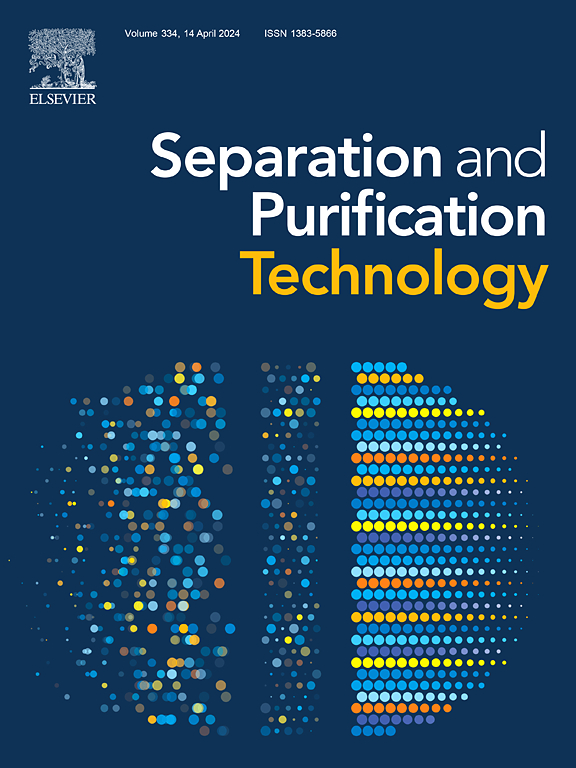Separation of chemical groups from wood tar via sequential organic solvent extraction and glycerol-assisted distillation
IF 8.1
1区 工程技术
Q1 ENGINEERING, CHEMICAL
引用次数: 0
Abstract
Wood tar as an unwanted byproduct from biomass carbonization refers to a mass composed of thousands of organic substances. This study investigated the separation of the wood tar using both solvent extraction and glycerol-assisted distillation. The comprehensive impact of the wood tar separation on environment was assessed by life cycle assessment (LCA). The results showed that dichloromethane exhibited optimal extraction efficiency for ketones and mononuclear aromatic compounds with lower molecular weights within the range of 78 to 110 g/mol. Conversely, acetone effectively dissolved all polycyclic aromatic hydrocarbons, except for naphthalene and its derivatives. Notably, the solubility of furans in both solvents showed the weak selectivity, while guaiacols had a higher degree of selectivity (E = 1.19) towards dichloromethane in comparison to phenols (E = 0.7). Adding glycerol in assisted distillation effectively reduced coking and heterogeneity, thereby enhancing the stability of the bio-oil. It is estimated that for 1 MJ of the bio-oil, the solvent extraction resulted in lower greenhouse gas emissions (0.0623 kg CO2 eq) compared to glycerol-assisted distillation (0.0716 kg CO2 eq).通过连续有机溶剂萃取和甘油辅助蒸馏分离木焦油中的化学基团
木焦油是生物质碳化过程中产生的一种无用副产品,由数千种有机物质组成。本研究采用溶剂萃取法和甘油辅助蒸馏法对木焦油进行了分离。通过生命周期评估(LCA)评估了木焦油分离对环境的综合影响。结果表明,二氯甲烷对分子量在 78 至 110 克/摩尔范围内的酮类和单核芳香族化合物具有最佳萃取效率。相反,丙酮能有效溶解除萘及其衍生物以外的所有多环芳烃。值得注意的是,呋喃在两种溶剂中的溶解度都显示出弱选择性,而愈创木酚对二氯甲烷的选择性(E = 1.19)高于酚类(E = 0.7)。在辅助蒸馏过程中添加甘油可有效减少结焦和异质性,从而提高生物油的稳定性。据估计,与甘油辅助蒸馏(0.0716 千克二氧化碳当量)相比,对于 1 兆焦耳的生物油,溶剂萃取的温室气体排放量(0.0623 千克二氧化碳当量)更低。
本文章由计算机程序翻译,如有差异,请以英文原文为准。
求助全文
约1分钟内获得全文
求助全文
来源期刊

Separation and Purification Technology
工程技术-工程:化工
CiteScore
14.00
自引率
12.80%
发文量
2347
审稿时长
43 days
期刊介绍:
Separation and Purification Technology is a premier journal committed to sharing innovative methods for separation and purification in chemical and environmental engineering, encompassing both homogeneous solutions and heterogeneous mixtures. Our scope includes the separation and/or purification of liquids, vapors, and gases, as well as carbon capture and separation techniques. However, it's important to note that methods solely intended for analytical purposes are not within the scope of the journal. Additionally, disciplines such as soil science, polymer science, and metallurgy fall outside the purview of Separation and Purification Technology. Join us in advancing the field of separation and purification methods for sustainable solutions in chemical and environmental engineering.
 求助内容:
求助内容: 应助结果提醒方式:
应助结果提醒方式:


